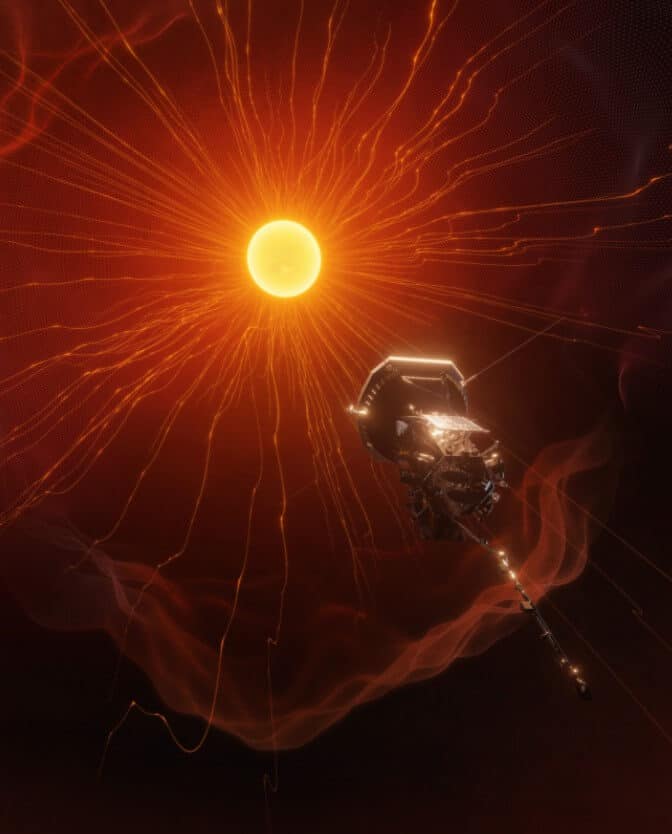It is very difficult to squeeze the sun but the reward for the risk is a lot of knowledge about the planet that affects our lives

For the first time ever, a spacecraft flew through the Sun's outer atmosphere. The Parker Solar Probe passed through the outer part of the Sun's corona in April 2021, passing directly through streams of solar plasma.
And by the way... there is a video of what the spacecraft "saw".
This movie shows data from the spacecraft's WISPR instrument, which is a wide-field imager, during another flyby in August 2021. Particles and solar dust are seen streaming across the spacecraft, and astronomer Carl Battams confirmed that other objects seen in the movie are Mercury, Venus, the Milky Way (the large vertical structure seen in the movie , which is amazing/shocking when you understand it) and then Saturn, Haaretz and Jupiter.
The first coronal boundary crossing data came from Parker's close flyby on April 28, 2021, during its eighth flyby of the Sun, when it was moving at an incredible 142 km/s. When it was 18.8 solar radii (13 million km) above the surface of the Sun itself, the spacecraft flew through the part of the corona visible during a solar eclipse.
"The evidence for the presence of the corona is in the magnetic field data, the solar wind data, and visually in the white light images," said Naver Ravapi, project scientist for the Parker Solar Probe, in a press release from the Johns Hopkins Applied Physics Laboratory.
The sun's corona is made of very hot gases that are bound to the sun by gravity and magnetic forces. As this material is pushed away from the Sun by the rising heat and pressure, it reaches a point where the gravitational forces and magnetic fields are too weak to contain it.
This point is called the critical Alfvén surface, and until now researchers were not sure exactly where this point was. But from the data Parker sent, the researchers knew from the specific conditions of the magnetic field and the particles that the spacecraft crossed that point, and finally entered the Sun's atmosphere.
"We definitely expected that sooner or later we would encounter the corona at least for a short period of time," said Justin Casper, lead author of a new paper in Physical Review Letters and deputy chief technology officer at BWX Technologies Inc. "But it's very exciting that we're already there."
The researchers are still working to make sense of the data, and have unraveled some clues about some strange S-shaped bends in the solar wind's magnetic field lines, which appear to place charged particles in a zigzag path as they escape the sun. They also hope to solve a long-standing solar mystery about how the corona is heated to millions of degrees, hotter than the sun itself.
The statement that the Parker Solar Probe "touched the sun" may be a bit of an exaggeration, but since then the spacecraft has moved closer to the sun as it moves in an increasingly narrow spiral orbit. Parker's last closest pass was on Nov. 21, as part of the Sun's tenth orbit, when it passed just 8.5 million km from the Sun's face. The data from this transition will be sent to Israel starting December 23.
For the news in Universe Today
More of the topic in Hayadan:

4 תגובות
We will never cross the sky!!!
The world is round.
Start waking up, they are working on us with their eyes.
Search online:
Matan Gordish
Odd TV
Eric Dubey
This video doesn't prove anything.. Do you think someone will be able to pass through the Earth's atmosphere?? All space stations and satellites are inside the Earth's atmosphere, not beyond it. And no one has reached the moon except Star Trick 😂. Don't let movies feed you
Why the word: shocking in the context of the Milky Way?
To smile, if anything 🙂